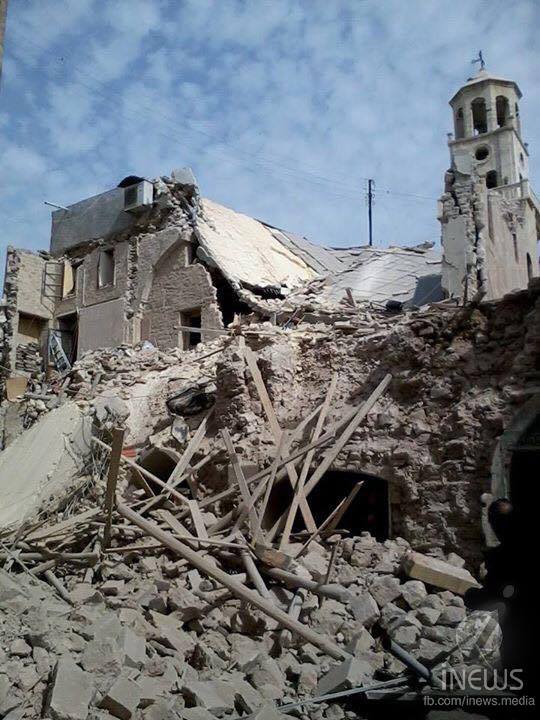 Forty Martyr’s Armenian Church destroyed.
Forty Martyr’s Armenian Church destroyed.
The 15th century Forty Martyr’s Armenian Apostolic Church located in Jydeydeh, the old Christian quarter of Aleppo was bombed on April 26. It was one of the oldest churches in the Armenian Diaspora. According to sources, the bell tower of the church, constructed in 1912, is considered to be a unique sample of baroque architecture in Aleppo.
According to the Armenian Weekly, some sources reported that Forty Martyr’s was destroyed because of explosives placed underneath the church via underground tunnels while others claim that it was destroyed because of shelling.
The ancient Armenian Church was mentioned 1476, in the second edition of the book The Exploit of the Holy Bible, written by Father Melikseth in Aleppo. The current building of the church was built and completed in 1491 to replace a small chapel in the old Christian cemetery of the Jdeydeh quarter.
The original church had a capacity for only 100 seats. Later, in 1499-1500, it underwent large-scale renovations; it was enlarged and a new prelacy building of the Armenian Diocese of Beroea was built in the church yard, funded by an Armenian by the name of named Reyis Baron Yesayi.
During the following years, Forty Martyrs Cathedral frequently became a temporary seat of many Armenian catholicoi of the Holy See of Cilicia.
Until 1579, the cathedral was surrounded with the tombstones of the Armenian cemetery, when the cemetery was moved and only clergymen and the elites of the community were allowed to be buried in the church yard.
In 1616, community leader Khoja Bedig Chelebi funded further renovations of the church and later that year, it reopened with the presence of Catholicos Hovhannes IV of Aintab and Bishop Kachatur Karkaretsi.
 Forty Martyrs Armenian Apostolic Church in Aleppo prior to its destruction.
Forty Martyrs Armenian Apostolic Church in Aleppo prior to its destruction.
The conflict in Syria began in 2011 with nationwide protests against President Bashar al-Assad as demonstrations across the Middle East were taking place and which came to be known as the Arab Spring. The conflict quickly gained momentum, evolving into an outright civil war between government forces and armed rebel groups. The Armenian community, centered mainly in the economic and business center Aleppo, along with the rest of the Syrian population, has sustained huge material and human losses.
In January of this year, the Armenian Catholic Cathedral Our Lady of Pity, located next to the Armenian Catholic Archeparchy of Aleppo, was bombed by rebel forces resulting in its partial destruction.
On September 21, 2014, the Armenian Genocide Memorial Church in Der Zor was blown up by Islamic State militants. The Memorial was dedicated to the 1.5 million innocent victims of the Armenian Genocide, many of whom perished in Der Zor following forced deportations from their ancestral homeland in Western Armenia.
















